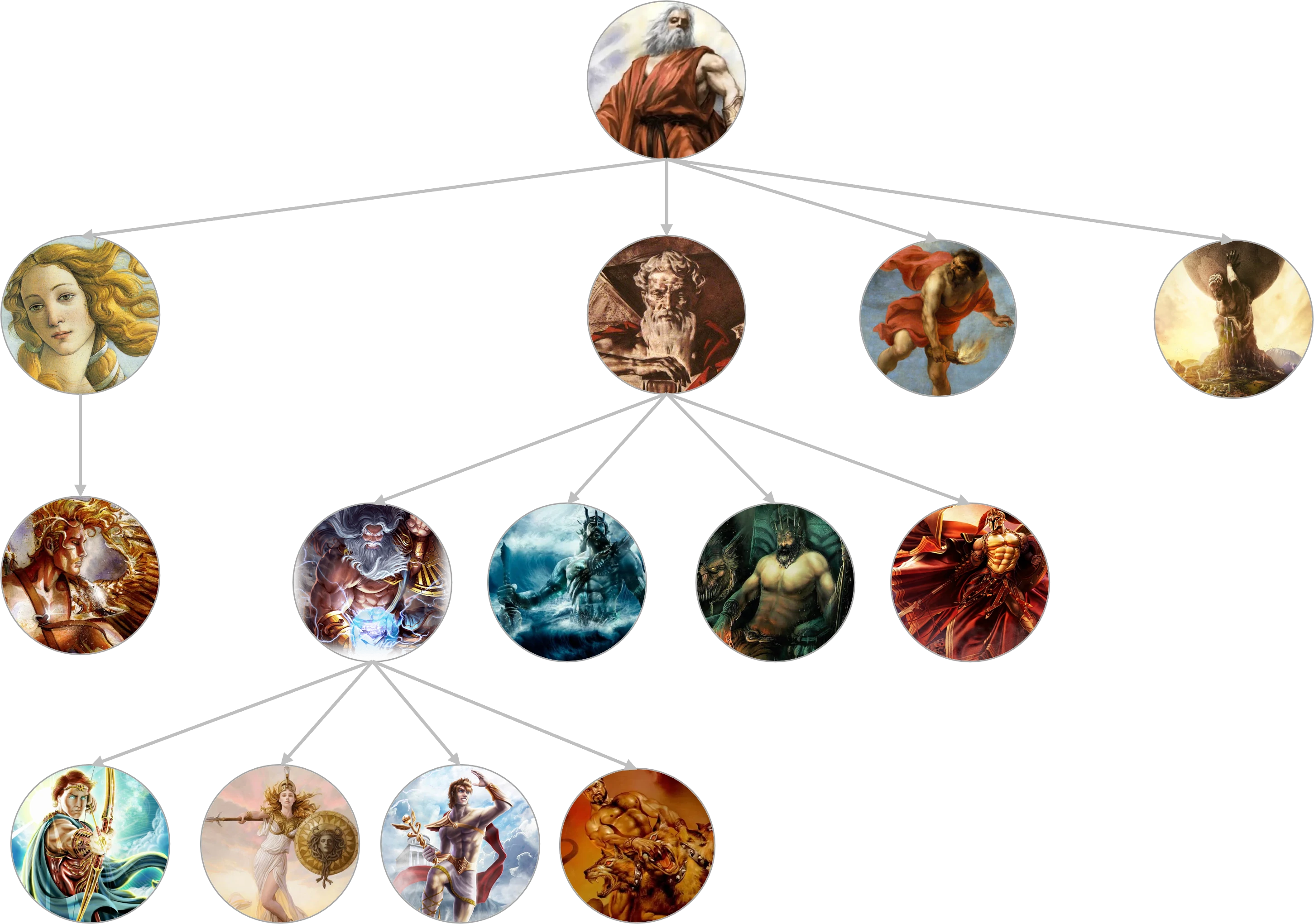N-ary Trees: A Practical Approach
Unlike binary trees, which have only two child nodes, n-ary trees can have any number of child nodes. In this post, we will dive into the world of n-ary trees and explore their application in managing family trees.
Understanding N-ary Trees
In essence, an n-ary tree is a non-linear abstract data structure defined recursively with a set of nodes. These nodes maintain a list that points to other nodes.
---
title: "N-ary tree"
---
graph TD
A[Root] --> B(Child 1)
A --> C(Child 2)
A --> D(Child 3)
A --> E(...)
A --> F(Child N)
B --> G(Child 1)
B --> H(Child 2)
B --> I(Child 3)
B --> J(...)
B --> K(Child N)
Family Tress and N-ary Trees
One compelling application of n-ary trees is managing family trees. N-ary trees perfectly fit the requirements of family trees, offering a hierarchical structure with parent-child relationships. Below, you can see an example of a family tree inspired by Greek mythology.
Defining the Objects
To create a family tree, we will implement a generic object. Additionally, we’ll define the tree structure as outlined below. It’s important to note that the methods implemented in the tree class can vary depending on your specific needs and the type of objects used as values in the nodes.
Node Implementation
The implementation of our tree node is straightforward. It consists of a parent object, a root object, and a list of child objects. To add nodes, you can use the following method in Java:
1
2
3
4
5
public Node add(Object o){
Node newNode = new Node(o);
this.children.add(newNode);
return newNode;
}
You can review the full Node class implementation here.
Tree Implementation
The main challenge in this project is implementing the tree structure. Since trees can be stored in files, you’ll need to design a parser to translate the tree into text and vice versa. Additionally, to display the tree in a graphical user interface (GUI), you’ll require a parser that can convert it into a DefaultMutableTreeNode type object.
For this project, I relied on the following pseudocode to understand the process (assuming a basic knowledge of stacks):
1
2
3
4
5
6
7
8
9
10
11
12
13
14
15
define stack
stack.push(first line)
while objects exist
S1 = stack.peek()
S2 = read object
if depth(S1) < depth(S2)
S1.addChild(S2)
stack.push(S2)
else
while depth(S1) >= depth(S2) and stack.size() >= 2
stack.pop()
S1 = stack.peek()
S1.addChild(S2)
stack.push(S2)
return stack.get(0)
File Handling: Saving and Opening Trees
Reading and saving trees in files can be simplified by including the parent of each item. Each node is represented on a separate line in the following format: parent:value. Additional attributes of the object are specified with colons.
For example:
1
2
3
4
5
6
7
Aang:Katara:0:0
Aang:Katara,Tenzin:Pema:0:0
Tenzin:Pema,Meelo::0:0
Tenzin:Pema,Jinora::0:0
Tenzin:Pema,Ikki::0:0
Aang:Katara,Bumi::0:0
Aang:Katara,Kya::0:0
To read these lines, you can extract the parent and node values and then use the addNewNode(parent, value) method, such as addNewNode(Aang, Tenzin).
To save trees, traverse the entire tree in a pre-order fashion and concatenate the parent and node values in the specified format.
---
title: Pre-order Traversal
---
graph TD
subgraph Tree
A((A)) --> B((B))
A --> C((C))
B --> D((D))
B --> E((E))
C --> F((F))
C --> G((G))
D --> H((H))
D --> I((I))
E --> J((J))
E --> K((K))
F --> L((L))
F --> M((M))
G --> N((N))
G --> O((O))
end
Tree --> P
subgraph P[Traversal]
x([ A - B - D - H - I - E - J - K - C - F - L - M - G - N - O ])
end
You can find methods for searching, removing, calculating depth, and modifying nodes in the Tree class.
Ensuring Object Uniqueness
To handle cases where a child has the same ID as its father, we ensure uniqueness through the father’s spouse. When creating an object and inserting it into the tree, we verify that it does not already exist based on its spouse ID. This is accomplished by overriding the equals(o) method:
1
2
3
4
5
@Override
public boolean equals(Object obj) {
GenObj aux = (GenObj) obj;
return nombre.equals(aux.nombre) && conyuge.equals(aux.conyuge);
}
Graphical User Interface (GUI)
The GUI allows you to create, modify, insert, delete, save, and open files. It also provides visualization of attributes for each node.
You can download sample trees from the examples folder and open them to test the functionality.
Download the Entire Project
If you’re interested in exploring the entire project, you can download it from GitHub. Feel free to leave your comments and feedback!



